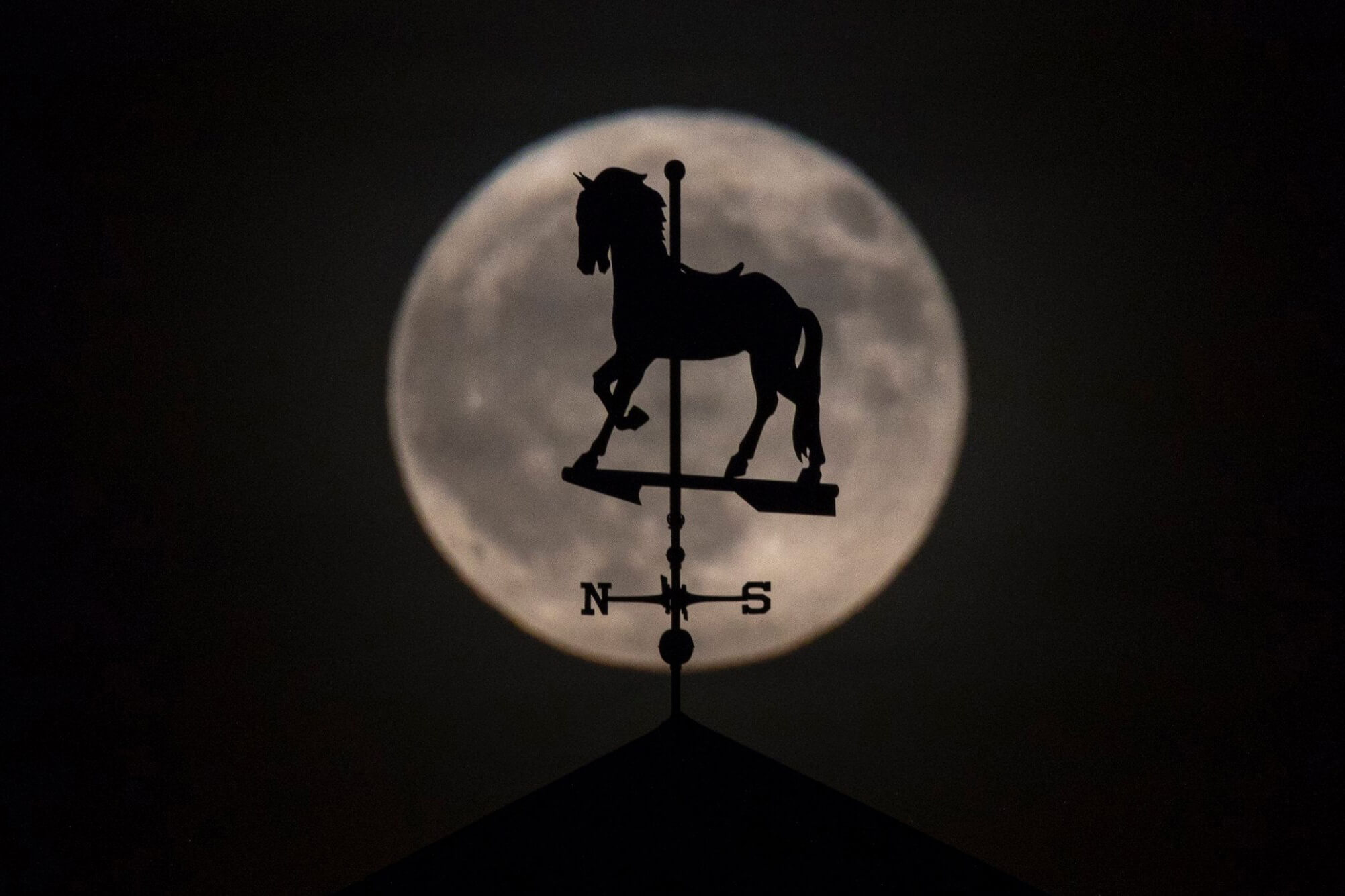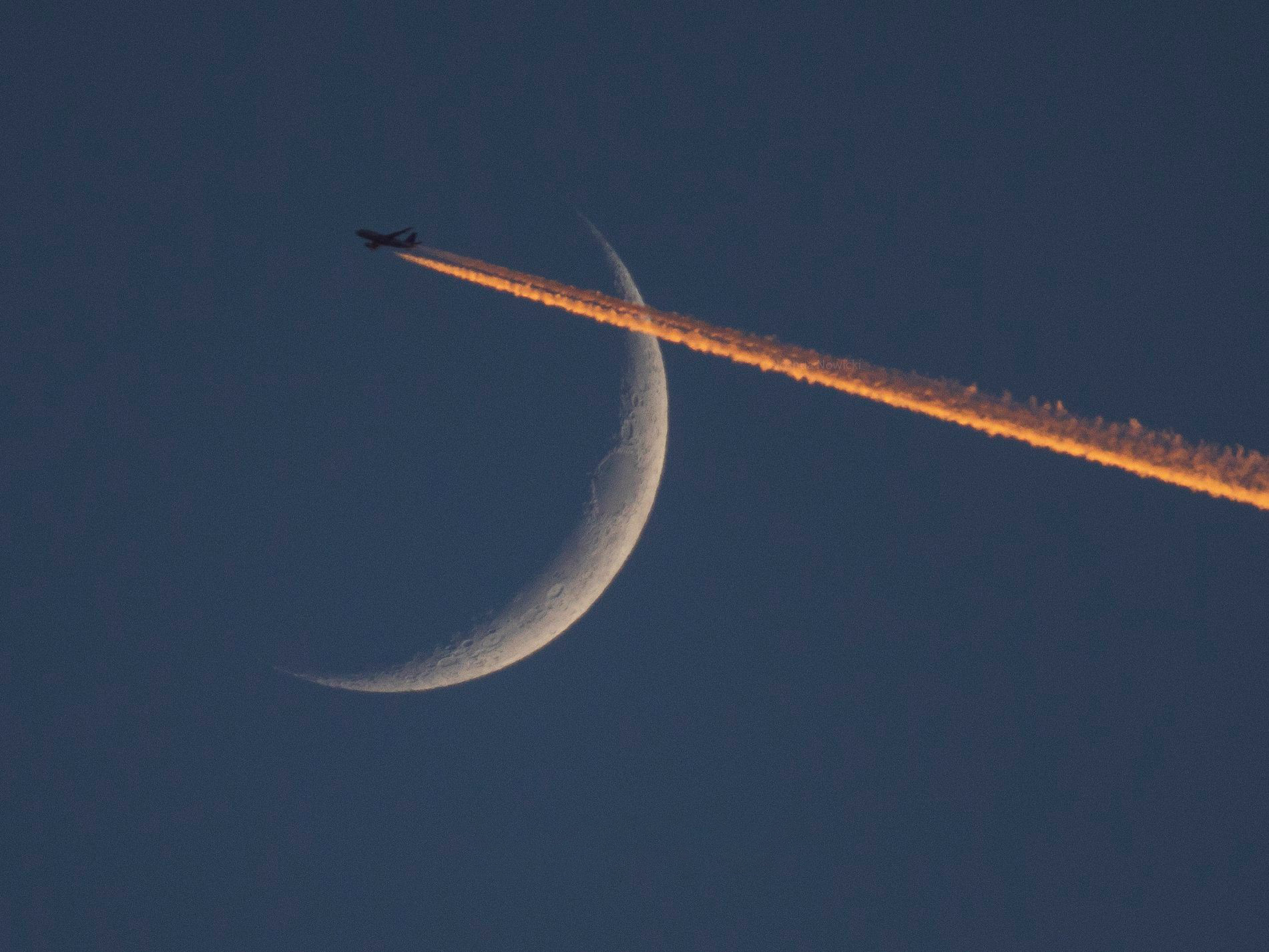Joshua Nowicki’s tips on taking beautiful moon photos in Southwest Michigan

The moon appears to be a simple thing to photograph, it looks so big and bright when viewing it in the night sky. Unfortunately, in photos, it often ends up looking like a small overexposed dot surrounded by darkness. This can be quite frustrating but it doesn't have to be. With the proper equipment, some planning and practice, you can create wonderful photos of the moon.
There is a wide range of options when photographing the moon.

Popular compositions in moon photography include closeups, aligning the moon between man-made structures, near features in the landscape and capturing airplanes, animals, people, etc. silhouetted in the moon. However, there are also a variety of factors that will determine what you are capable of such as equipment, weather, time of day and the moon phase.
For most moon photos, you will want a super telephoto lens and a tripod. There are some instances where a tripod may not be necessary, such as photographing the moon during the day; however, overall using a tripod will help to ensure that photos are in focus. Planning is key for successfully creating engaging photos. Finding possible locations in advance will help you make the most of your moon photography time. I like to look for prominent features in the landscape such as interesting trees, lighthouses, towers and church steeples. By locating features that are elevated, you have more opportunity to align the moon with the feature. For me, the biggest challenge when photographing the moon is the fact that the moon moves across the night sky relatively quickly. Because of this, I have learned to plan my compositions in advance and work very fast so that I can capture the moon as desired.
Planning is key for successfully creating engaging photos. Finding possible locations in advance will help you make the most of your moon photography time. I like to look for prominent features in the landscape such as interesting trees, lighthouses, towers and church steeples. By locating features that are elevated, you have more opportunity to align the moon with the feature. For me, the biggest challenge when photographing the moon is the fact that the moon moves across the night sky relatively quickly. Because of this, I have learned to plan my compositions in advance and work very fast so that I can capture the moon as desired.
Here are a few tips on how to take several different types of moon photos.
Detailed Closeup
 To take that big beautiful closeup of the moon, you will need clear weather, a super telephoto lens and a tripod. With regards to lens choice, the bigger and faster the better. I usually use a 500mm f/4 lens and sometimes add a 1.4x teleconverter. Faster lenses with a large maximum aperture also help because the moon is moving through the night sky, and the longer the exposure the more likely there is to be a blur. For camera settings for photographing the moon at night, try starting out around f/5.6, 1/250 second, ISO 200 and adjust as needed.
To take that big beautiful closeup of the moon, you will need clear weather, a super telephoto lens and a tripod. With regards to lens choice, the bigger and faster the better. I usually use a 500mm f/4 lens and sometimes add a 1.4x teleconverter. Faster lenses with a large maximum aperture also help because the moon is moving through the night sky, and the longer the exposure the more likely there is to be a blur. For camera settings for photographing the moon at night, try starting out around f/5.6, 1/250 second, ISO 200 and adjust as needed.
Full Moon & Landscape
 For photos of the full moon that include elements of the landscape, such as lighthouses, trees and buildings, I will usually take photos both the day before and after it is at peak fullness. The reason for this is that the moon will still look full and this will give you a three-day range to work with. This allows you to accommodate weather or air quality issues as well as the different light that occurs each day. And, if you can not accomplish the shot correctly on one of the days, you have more opportunities! Lens choice will be dependent on how much of the landscape you would like to show. Look at both the sunrise and sunset times along with the moonrise and moonset times. If you can find a time when those two times are close to each other, I find that works best for balancing the exposure of the photo.
For photos of the full moon that include elements of the landscape, such as lighthouses, trees and buildings, I will usually take photos both the day before and after it is at peak fullness. The reason for this is that the moon will still look full and this will give you a three-day range to work with. This allows you to accommodate weather or air quality issues as well as the different light that occurs each day. And, if you can not accomplish the shot correctly on one of the days, you have more opportunities! Lens choice will be dependent on how much of the landscape you would like to show. Look at both the sunrise and sunset times along with the moonrise and moonset times. If you can find a time when those two times are close to each other, I find that works best for balancing the exposure of the photo.
Airplanes
 It takes patience and close attention, but taking photos of things like airplanes and birds in front of or near the moon is quite doable. I have the best luck with this during the daytime up to about 20 minutes after sunset (though it is possible at night). If you become familiar with normal flight paths in the sky, you can start to plan for when will be an ideal time to look for an opportunity. On days when there are contrails visible in the sky, you can get a good feel for the paths planes are taking. Like the closeups of the moon, the longer and faster the lens the better. Airplanes move through the sky quickly so if you are taking photos when there is less light, you should consider increasing your ISO so that you also increase the shutter speed. Additionally, if your camera has a continuous shooting mode (aka burst mode or sports mode), this can improve your chances of capturing the shot.
It takes patience and close attention, but taking photos of things like airplanes and birds in front of or near the moon is quite doable. I have the best luck with this during the daytime up to about 20 minutes after sunset (though it is possible at night). If you become familiar with normal flight paths in the sky, you can start to plan for when will be an ideal time to look for an opportunity. On days when there are contrails visible in the sky, you can get a good feel for the paths planes are taking. Like the closeups of the moon, the longer and faster the lens the better. Airplanes move through the sky quickly so if you are taking photos when there is less light, you should consider increasing your ISO so that you also increase the shutter speed. Additionally, if your camera has a continuous shooting mode (aka burst mode or sports mode), this can improve your chances of capturing the shot.
A Person Silhouetted in the Moon
 Capturing a silhouette of a person in front of the moon makes for an interesting and engaging photo but they are some of the most challenging to accomplish. You will need to find a location that has enough open space to have the model far enough away that they fit into the moon. Additionally, you will need an unobstructed view of the horizon so that the moon is not obscured by buildings, trees, etc. Also, you will need to know where the moon will rise or set so that you can get the model into the correct position/location. There are a variety of apps and websites that can help you plan. In Southwest Michigan, I have found that sand dunes can work well for this. A super telephoto is required for this type of photo, and if you really want moon detail and the subject in focus, you will need to shoot at f/11+. Although your subject may seem a long way from the camera, it is much closer than the moon, and you will need a much larger depth of field.
Capturing a silhouette of a person in front of the moon makes for an interesting and engaging photo but they are some of the most challenging to accomplish. You will need to find a location that has enough open space to have the model far enough away that they fit into the moon. Additionally, you will need an unobstructed view of the horizon so that the moon is not obscured by buildings, trees, etc. Also, you will need to know where the moon will rise or set so that you can get the model into the correct position/location. There are a variety of apps and websites that can help you plan. In Southwest Michigan, I have found that sand dunes can work well for this. A super telephoto is required for this type of photo, and if you really want moon detail and the subject in focus, you will need to shoot at f/11+. Although your subject may seem a long way from the camera, it is much closer than the moon, and you will need a much larger depth of field.
Moon as an Element in the Photo
 The moon does not need to be the main subject of a photo. It is usually much easier to have it included as a secondary element. If you do not have a super telephoto lens, this will likely be the best way to include the moon in photos. Consider framing the moon with something else that will be the focus in the foreground such as a lighthouse, city buildings, barn or trees.
The moon does not need to be the main subject of a photo. It is usually much easier to have it included as a secondary element. If you do not have a super telephoto lens, this will likely be the best way to include the moon in photos. Consider framing the moon with something else that will be the focus in the foreground such as a lighthouse, city buildings, barn or trees.
 Keep your eyes open for rare events such as moonbows, moon halos and eclipses. These do not happen all that often but they make for stunning images.
Keep your eyes open for rare events such as moonbows, moon halos and eclipses. These do not happen all that often but they make for stunning images.
Finding the perfect location
While out taking photos, be respectful of private property, protected areas, and stay on designated trails and walkways. Always strive to take amazing images while preserving nature for other visitors and photographers.
Visit Southwest Michigan would love to see your photos of the moon. Be sure to tag them with #swmichigan.
See more of Joshua’s photography on Facebook.
Share with Us
Please send us photos and videos of your Southwest Michigan getaway. Use our hashtag #swmichigan or upload your photos to our content collector below. This is an opportunity for your photos to appear on our social media, website or marketing materials. Thanks for sharing your memories!


